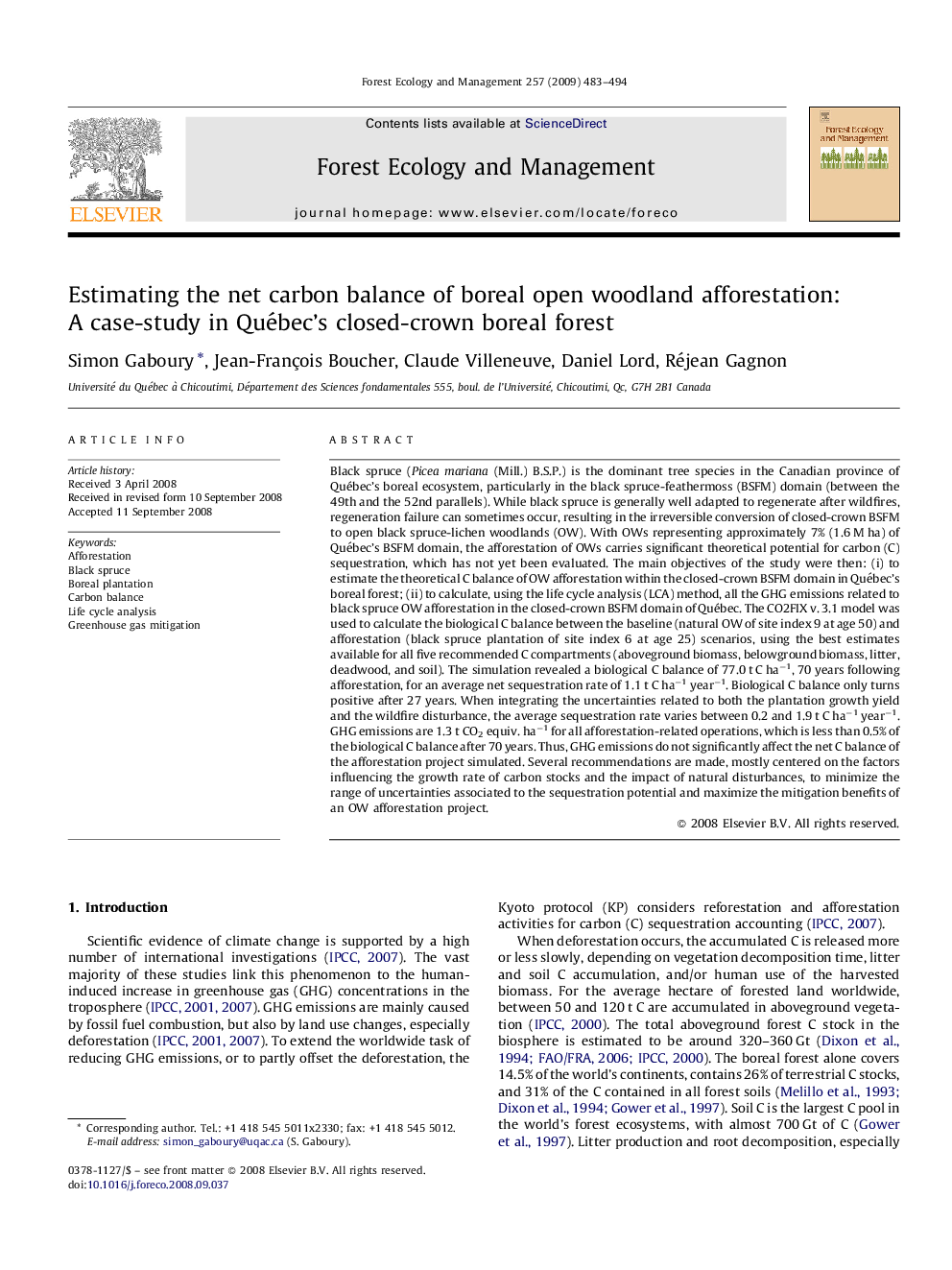| Article ID | Journal | Published Year | Pages | File Type |
|---|---|---|---|---|
| 89270 | Forest Ecology and Management | 2009 | 12 Pages |
Black spruce (Picea mariana (Mill.) B.S.P.) is the dominant tree species in the Canadian province of Québec’s boreal ecosystem, particularly in the black spruce-feathermoss (BSFM) domain (between the 49th and the 52nd parallels). While black spruce is generally well adapted to regenerate after wildfires, regeneration failure can sometimes occur, resulting in the irreversible conversion of closed-crown BSFM to open black spruce-lichen woodlands (OW). With OWs representing approximately 7% (1.6 M ha) of Québec’s BSFM domain, the afforestation of OWs carries significant theoretical potential for carbon (C) sequestration, which has not yet been evaluated. The main objectives of the study were then: (i) to estimate the theoretical C balance of OW afforestation within the closed-crown BSFM domain in Québec’s boreal forest; (ii) to calculate, using the life cycle analysis (LCA) method, all the GHG emissions related to black spruce OW afforestation in the closed-crown BSFM domain of Québec. The CO2FIX v. 3.1 model was used to calculate the biological C balance between the baseline (natural OW of site index 9 at age 50) and afforestation (black spruce plantation of site index 6 at age 25) scenarios, using the best estimates available for all five recommended C compartments (aboveground biomass, belowground biomass, litter, deadwood, and soil). The simulation revealed a biological C balance of 77.0 t C ha−1, 70 years following afforestation, for an average net sequestration rate of 1.1 t C ha−1 year−1. Biological C balance only turns positive after 27 years. When integrating the uncertainties related to both the plantation growth yield and the wildfire disturbance, the average sequestration rate varies between 0.2 and 1.9 t C ha−1 year−1. GHG emissions are 1.3 t CO2 equiv. ha−1 for all afforestation-related operations, which is less than 0.5% of the biological C balance after 70 years. Thus, GHG emissions do not significantly affect the net C balance of the afforestation project simulated. Several recommendations are made, mostly centered on the factors influencing the growth rate of carbon stocks and the impact of natural disturbances, to minimize the range of uncertainties associated to the sequestration potential and maximize the mitigation benefits of an OW afforestation project.
